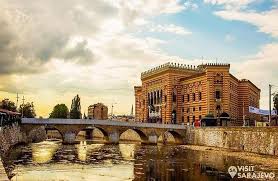Exploring the Cultural and Historical Significance of Sarajevo

Introduction
Sarajevo, the capital of Bosnia and Herzegovina, is a city steeped in rich history and cultural diversity, often dubbed the “Jerusalem of Europe” due to its unique blend of religions and traditions. The significance of Sarajevo has been magnified in recent years as it has emerged from the shadows of its tumultuous past, showcasing a vibrant culture, historical landmarks, and a resilient spirit that attracts tourists and scholars alike. Understanding Sarajevo’s past and present is crucial to appreciating its continued relevance in today’s European landscape.
Historical Background
Sarajevo’s history dates back to the Ottoman Empire in the 15th century, which laid the foundation for the city’s cultural tapestry. The city is home to notable landmarks including the Gazi Husrev-beg Mosque, built in 1531, and the historic Baščaršija bazaar, which captures the essence of its Ottoman roots. Sarajevo also gained notoriety during the Austro-Hungarian period when it modernized rapidly and became the site of the assassination of Archduke Franz Ferdinand in 1914, an event that sparked World War I.
Recent Developments
In recent years, Sarajevo has seen significant investments in tourism infrastructure, promoting cultural events and festivals that celebrate its diverse heritage. The Sarajevo Film Festival, held annually, has gained international acclaim, attracting filmmakers and tourists from around the world. Additionally, the city’s recovery from the 1990s conflict has seen the restoration of historical sites and the establishment of memorials that honor victims of the war, illustrating the resilience and unity of its people.
Modern-day Sarajevo
Today, Sarajevo stands as a symbol of peace and reconciliation. It plays a pivotal role in fostering dialogue among different cultures and ethnic groups. The city’s demographics reflect its rich history, with a blend of Bosniaks, Serbs, and Croats coexisting. Current efforts focus on promoting inclusivity and tourism, with new hotel developments, museums, and cultural centers aiming to offer visitors an authentic experience of its heritage.
Conclusion
Sarajevo’s dynamic character makes it a compelling destination for those interested in history, culture, and the lessons of resilience. The city’s transformation from a war-torn area to a thriving cultural hub is both inspiring and educational, underscoring the importance of learning from the past while embracing a hopeful future. As Sarajevo continues to develop, it remains a beacon of cultural exchange and a testament to the enduring spirit of its people, promising a significant impact on European culture for years to come.









